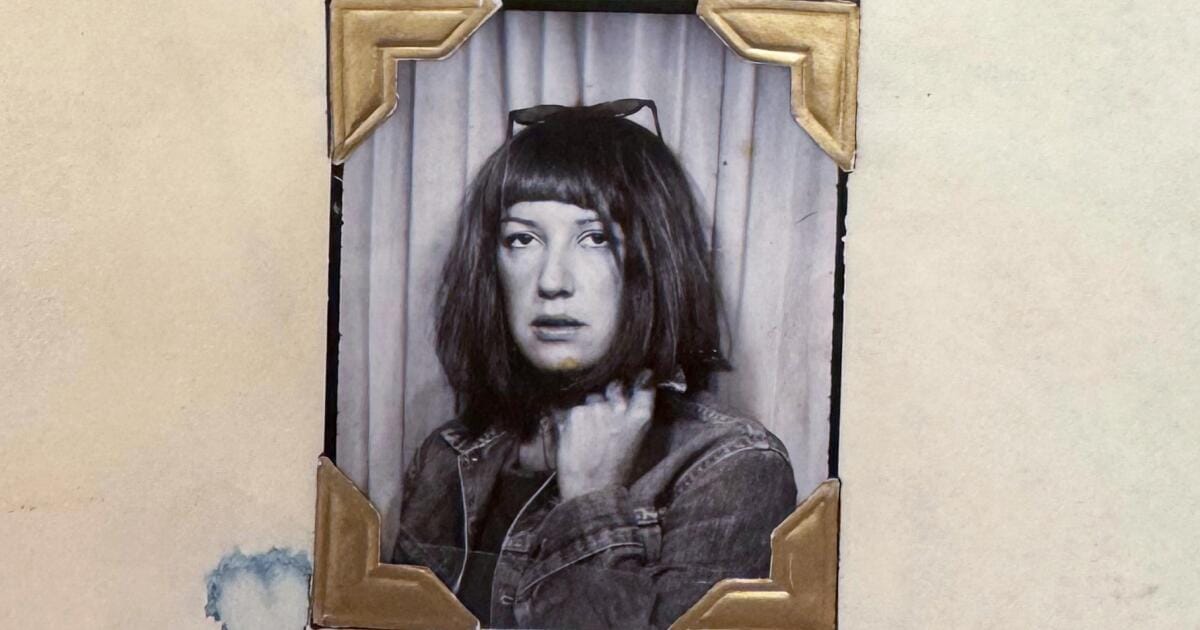L.A. is a harmony of contradictions: It’s a bankrupt skyscraper covered in graffiti, a Mercedes-Benz G-class SUV with an expired registration, the quiet confusion of wondering whether a stranger’s outfit means they’re unhoused or just new to Silver Lake. L.A.’s refusal to make sense is what makes it irresistible, and no one understood that better than writer, artist and provocateur Eve Babitz, who died in 2021.
“Los Angeles isn’t a city. It’s a gigantic, sprawling, ongoing studio,” she wrote in her 1974 book “Eve’s Hollywood.” “Everything is off the record.”
Born in Hollywood in 1943 to a classical violinist father and an artist mother — and with Igor Stravinsky as her godfather — Babitz was destined for “It”-girl-ism. While people tend to flee their hometowns to start over in a new city, usually a place like L.A. or New York, Babitz knew she was exactly where she was meant to be. She tried New York once as a typist for Timothy Leary, because it’s where “real writers” lived and worked; she gave it one year before moving back to L.A.
“She lived in Rome for six months, and that was the only other city she loved, almost as much as L.A.,” Mirandi Babitz, Eve’s younger sister, told me. Despite her growing popularity in the ’60s and ’70s, Eve Babitz didn’t hightail it from her Hollywood bungalow to live in Pacific Palisades or Topanga or Malibu — she lived and died in the heart of it all.
When I asked Mirandi what Babitz would think of today’s coffee-shop lines, overpriced wine bodegas and tinned fish culture, she said with a laugh, “She’d roll her eyes.”
Babitz may have been synonymous with places, including the Chateau Marmont and Musso & Frank Grill, or with people such as Jim Morrison and Ed Ruscha. But it wasn’t because she was a hanger-on, desperate to be cool or famous. She was the keeper of cool, and L.A. was the only muse she gave a damn about. “I did not become famous but I got near enough to smell the stench of success. It smelt like burnt cloth and rancid gardenias,” she wrote in 1977’s “Slow Days, Fast Company: the World, the Flesh, and L.A.”
After graduating from Hollywood High, Babitz skipped the traditional UCLA route and instead took classes at Los Angeles City College. “The school was located about 4 blocks from the hospital I was born in,” she wrote in “Eve’s Hollywood.” “It was on Vermont near Melrose, which is an indeterminate lower-middle-class sort of neighborhood with no delusions. Westwood, where UCLA is, is so insanely crappy you could throw up. It’s so WHITE and it’s so clean and it’s so impervious …”
At age 20, Babitz made a name for herself in the art world. She posed nude, playing chess with a fully clothed Marcel Duchamp for Esquire — a cheeky act of revenge against her lover, Walter Hopps, who wasn’t returning her calls. Shot by Julian Wasser at the Norton Simon Museum, the now-iconic photo did its job: Hopps rang her soon after. That photo is now described by the Smithsonian Archives of American Art as being “among the key documentary images of American modern art.”
Babitz also launched her independent career as an artist, designing album covers for Linda Ronstadt, the Byrds and Buffalo Springfield. Her foray into the music scene — where she partied with (and allegedly had affairs with) legends like Morrison of the Doors (“I met Jim and propositioned him in three minutes,” she wrote in “Eve’s Hollywood”) and some original Eagles members — blossomed into a social life so magnanimous that names like Andy Warhol, Steve Martin and Annie Leibovitz came up as casually as what Babitz had for lunch that day.
She went on to publish several books and worked as a journalist, writing about everything from Salvador Dalí to the best taquito stand in L.A. (Don’t worry — we listed it below.) Although Babitz’s love life kept the city gossiping, it was always apparent that her true love was the city itself. Her books, including “Sex and Rage” (1979) and “L.A. Woman” (1982), are all love letters to a city she knew inside out. In turn, her life in L.A. became the stuff of urban legend — and decades later, we’re still talking about it.
Babitz understood L.A. better than anyone, including its seductions and secrets. Her legacy is being revisited in the Huntington’s exhibition “Los Angeles, Revisited,” which explores how L.A. has been shaped — and reshaped — by its visionaries. Babitz and her mother, Mae, a self-taught artist known for her preservation work on the Watts Towers and her sketches of L.A.’s vanishing buildings, have drawings included in the show. The exhibition runs through Dec. 1.
Consider what’s below your invitation to see L.A. as Babitz did — expansively, honestly and maybe a little recklessly. Just a heads-up, though: You won’t find a single coffee shop with a DMV-like line on this list.
